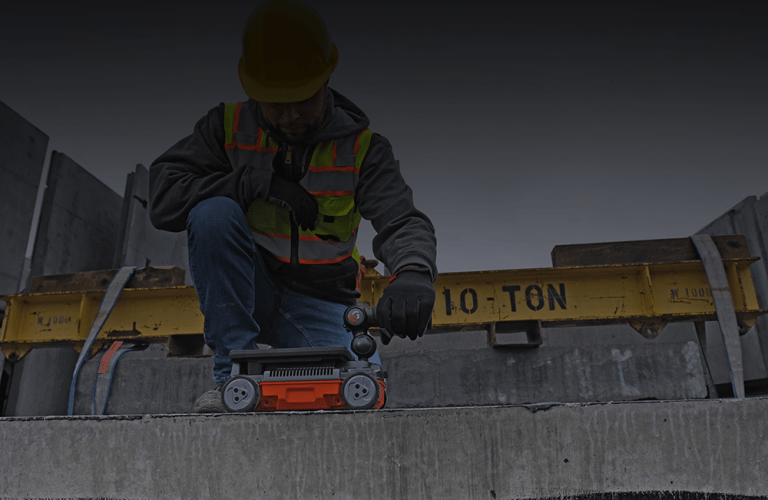RainierGPR Service Areas: Specialist Concrete Scanning in Your Region
RainierGPR Service Areas: Specialist Concrete Scanning in Your Region
Blog Article
Concrete Scanning: An Important Action In The Direction Of Making Certain Structural Honesty and Safety And Security
In the world of building and infrastructure maintenance, the value of concrete scanning can not be overemphasized. This thorough process holds the crucial to revealing prospective hazards concealed below the surface of apparently strong structures. By utilizing innovative modern technology and methodologies, concrete scanning serves as a critical tool in guaranteeing that the integrity and safety of structures and bridges are upheld to the highest requirements. However, beyond its surface-level effects, the duty of concrete scanning prolongs much much deeper than satisfies the eye.
Significance of Concrete Scanning
Concrete scanning plays an important role in ensuring the structural integrity and security of structures and infrastructure tasks. By utilizing innovative technologies such as ground-penetrating radar (GPR) and electro-magnetic induction, professionals can non-destructively check concrete structures to detect potential defects, spaces, ingrained things, and support format. This procedure allows very early discovery of abnormalities that could compromise the security of a framework, preventing expensive damages and making sure the safety of occupants.
Concrete scanning is specifically necessary during the planning and building phases of a task. Before exploration, cutting, or coring right into concrete, scanning assists identify the specific locations of rebar, post-tension wires, and various other ingrained elements, lowering the danger of unintended hits that could cause structural weak points. In addition, concrete scanning aids in quality assurance by validating the density of concrete covers and finding any inconsistencies that may influence the overall resilience of the framework. Inevitably, purchasing concrete scanning solutions is not only a positive step to minimize risks but likewise a fundamental step towards maintaining the long-lasting safety and stability of structures and facilities.
Modern Technology for Concrete Evaluation

Advantages of Very Early Detection
Timely detection of structural concerns can significantly alleviate dangers click and ensure the durability of construction jobs. By determining potential issues early in the building and construction process, stakeholders can take positive measures to deal with problems before they rise right into larger and much more pricey problems. One of the crucial advantages of very early detection is the avoidance of architectural failings, which can position major security risks and result in job delays and financial other losses.
Moreover, very early discovery enables for timely repair services and upkeep, which can help prolong the life-span of the structure. By resolving issues without delay, construction groups can avoid costly repair services or even the need for early substitute of architectural components. This positive technique not just conserves time and money however also improves the overall safety and security and sturdiness of the construction project.
In addition, very early discovery can boost task preparation and decision-making by supplying stakeholders with beneficial insights into the problem of the framework. Equipped with this details, task supervisors can make educated choices relating to building and construction techniques, products, and timelines, causing a lot more successful and effective job results.
Making Sure Structural Stability
Making sure the architectural stability of a construction job is vital to its safety and longevity. Concrete scanning plays a crucial function in ensuring architectural stability by identifying possible concerns such as spaces, delamination, or reinforcement corrosion that could compromise the honesty of the structure over time.
By using sophisticated scanning innovations like ground-penetrating radar (GPR) and electro-magnetic induction, building professionals can non-invasively inspect concrete frameworks to recognize locations of issue beneath the surface. This aggressive strategy permits the early detection of weaknesses or issues, allowing timely repairs or reinforcement to stop architectural failures.
Routine concrete scanning during different construction stages and throughout the life process of a framework can aid keep its security, alleviate dangers, and make sure the safety and security of residents. By prioritizing architectural stability through concrete scanning, construction jobs can improve their strength and sturdiness, inevitably adding to better security and long life.
Protecting Against Essential Failures
Carrying out regular evaluations, such as concrete scanning, can expose surprise issues like spaces, fractures, or rust that could jeopardize the integrity like it of a framework. By using sophisticated scanning technologies like Ground Permeating Radar (GPR) or Concrete X-ray, designers can non-destructively examine the problem of concrete and recognize weak factors that need support or repair work.

Conclusion
In conclusion, concrete scanning plays a critical duty in making sure structural integrity and safety and security by utilizing innovative technology for very early detection of possible problems. This aggressive method assists protect against important failings and ensures the stability of structures. It is vital to focus on concrete evaluation as a basic technique to shield the longevity and safety of buildings and facilities.
Concrete scanning plays a crucial function in ensuring the architectural honesty and safety of buildings and framework tasks. In addition, concrete scanning help in quality control by verifying the thickness of concrete covers and finding any type of discrepancies that might impact the total durability of the framework. Concrete scanning plays a crucial role in making certain architectural security by finding prospective concerns such as voids, delamination, or reinforcement rust that can endanger the honesty of the framework over time.

In final thought, concrete scanning plays an essential function in guaranteeing structural integrity and safety by utilizing sophisticated technology for very early detection of possible concerns.
Report this page